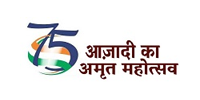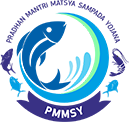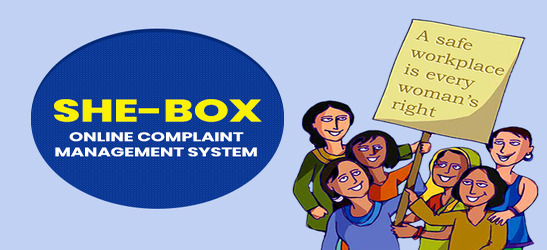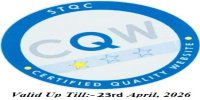Marine Fisheries
Introduction
India is the world’s most populous country of the world and it is expected to touch 1.66 billion by 2047. While India aspires to be a developed nation by 2047, it is important for the country to have a circumspect view to the growth. The food security happens to be one of the most important aspect for self-reliance.
India is endowed with 2.02 million square kilometres of EEZ and a coastline of 8118 kilometres that has an estimated annual potential of 5.31 million metric tons for capture fisheries. While the capture fisheries from resources reached 44.95 lakh tonnes in 2023-24, however activities such as deep sea and high sea fishing offer avenues to further harness the fisheries’ potential and enhance marine fish production. Hence, it becomes important to optimally and sustainably expand our capture fisheries operations particularly of high-quality Tuna and Tuna like species.
India is endowed with 2.02 million square kilometres of EEZ and a coastline of 8118 kilometres that has an estimated annual potential of 5.31 million metric tons for capture fisheries. While the capture fisheries from resources reached 44.95 lakh tonnes in 2023-24, however activities such as deep sea and high sea fishing offer avenues to further harness the fisheries’ potential and enhance marine fish production. Hence, it becomes important to optimally and sustainably expand our capture fisheries operations particularly of high-quality Tuna and Tuna like species.
Achievements of Marine Fisheries
The marine fisheries sector has demonstrated remarkable growth over the decades, with production increasing from 5.34 lakh tonnes in 1950-51 to an impressive 44.95 lakh tonnes in 2023-24. The Department, acknowledging the rich yet limited potential of capture fisheries has also focused on expanding Mariculture to achieve nutrition and food security through fish and seafood. This is exhibited in the robust growth of Coastal Aquaculture as Shrimp production increased by 270% from 3.22 lakh tons in 2013-14 to ~11.84 lakh tons in 2023-24, majorly contributing to the seafood exports of 17.81 lakh tonnes worth Rs 60,523.89 crore in 2023-24.
Initiatives by Department
Under PMMSY, capture fisheries has received a major boost through a slew of measures by providing financial assistance for deep sea fishing vessels and upgradation of fishing vessels. Uniform registration and licensing of fishing vessels is implemented through unique digital platform known as ‘ReALCRaft’ portal, wherein registration of fishing vessels is granted under Merchant Shipping Act 1958 and licence is granted under Marine Fishing Regulation Act (MFRAs) by the concerned coastal States/Union Territories. Periodic physical verification of fishing vessels is also undertaken to update the data and maintaining the accuracy in the system.
For promoting mariculture, impactful projects such as establishment of fin fish hatcheries, bivalve cultivation units, sea cages, rafts and monolines for seaweed farming, expansion of brackishwater pond area have been undertaken across all coastal States/UTs to boost marine fish production.
Huge impetus to the post-harvest infrastructure has come forth through an investment of Rs 2965.37 crore for establishment of 35 fishing harbours and 22 landing centres along with facilities for marketing, cold storage, transportation and logistics. This includes insulated/refrigerated vehicles, fish markets and kiosks to minimize post-harvest losses for strengthening value chain and providing market linkages.
For promoting mariculture, impactful projects such as establishment of fin fish hatcheries, bivalve cultivation units, sea cages, rafts and monolines for seaweed farming, expansion of brackishwater pond area have been undertaken across all coastal States/UTs to boost marine fish production.
Huge impetus to the post-harvest infrastructure has come forth through an investment of Rs 2965.37 crore for establishment of 35 fishing harbours and 22 landing centres along with facilities for marketing, cold storage, transportation and logistics. This includes insulated/refrigerated vehicles, fish markets and kiosks to minimize post-harvest losses for strengthening value chain and providing market linkages.
Social Safety Net is being ensured by providing annual Livelihood and Nutritional Support during fishing ban/lean period that has increased from 40,397 families in 2013-14 to 5.94 lakh fishers’ families in 2023-24. In addition, insurance coverage has been increased from Rs 1 lakh to Rs 5 lakh and has been provided to average 32.16 lakh fishers through Group Accident Insurance Scheme for Fishers (GAIS).
Vessel Communication and Support System
It was launched by Hon’ble PM on 30th Aug 2024 at Palghar, Maharashtra that targets to install 1 lakh transponders free of cost on fishing vessels.This enables two way communication for providing information on potential fishing zones.Installation of 15,414 has been completed till date benefiting 1.5 lakh fishers.
Initiatives with regard to the sustainability and environmental aspects are on special focus with participation in Glo-Litter initiative, species conservation, enforcing turtle excluder devices in the gears and improving biodiversity by way of installing artificial reefs. As a responsible nation, India is also a member of Global Environment Facility (GEF) Large Marine Ecosystem (LME) program two of which viz. Bay of Bengal and Arabian Sea border India. India is committed to work towards benefitting environment while promoting sustainable livelihood for local communities.
Initiatives with regard to the sustainability and environmental aspects are on special focus with participation in Glo-Litter initiative, species conservation, enforcing turtle excluder devices in the gears and improving biodiversity by way of installing artificial reefs. As a responsible nation, India is also a member of Global Environment Facility (GEF) Large Marine Ecosystem (LME) program two of which viz. Bay of Bengal and Arabian Sea border India. India is committed to work towards benefitting environment while promoting sustainable livelihood for local communities.
Key Focus Areas
For giving fillip to Marine Fisheries and development of the sector in an inclusive and sustainable manner, 5th Marine Fisheries Census for data-driven policymaking and New Single Window System (NSWS) by the Coastal Aquaculture Authority have been launched. Conservation of marine species and ecosystem is being prioritized as per recommendations of the National Policy on Marine Fisheries (2017) and under the national action plan for sustainable and effective management of the shark populations. Turtle conservation and installation of Turtle Excluder Devices (TEDs) is also implemented with amendments in the State MFRAs. Rebuilding of fish stocks is being undertaken by installation of 937 units of artificial reefs in 11 coastal States/UTs and sea ranching, this has engaged 7,000 fishers, officials and stakeholder of 680 coastal villages for training.
In addition, Regional Centre of ICAR-Central Marine Fisheries Research Institute (ICAR-CMFRI) in Mandapam, Tamil Nadu, has been announced as the Nodal Institute for NBCs focused on marine fish species. The Department of Fisheries, GoI has adopted a strategic cluster-based development approach to enhance competitiveness and efficiency in the sector. Two key clusters in Marine Fisheries Sector have been launched with end-to-end value chain approach namely: Seaweed Cluster in Lakshadweep and Tuna Cluster in Andaman and Nicobar Islands.
A pilot project has been undertaken with ICAR-CIFRI to explore the use of drone technology for fish transportation and explore the potential of drones in monitoring and managing inland fisheries, improving efficiency and sustainability. About 3,000 stakeholders have participated in the drone demonstrations events.
In addition, Regional Centre of ICAR-Central Marine Fisheries Research Institute (ICAR-CMFRI) in Mandapam, Tamil Nadu, has been announced as the Nodal Institute for NBCs focused on marine fish species. The Department of Fisheries, GoI has adopted a strategic cluster-based development approach to enhance competitiveness and efficiency in the sector. Two key clusters in Marine Fisheries Sector have been launched with end-to-end value chain approach namely: Seaweed Cluster in Lakshadweep and Tuna Cluster in Andaman and Nicobar Islands.
A pilot project has been undertaken with ICAR-CIFRI to explore the use of drone technology for fish transportation and explore the potential of drones in monitoring and managing inland fisheries, improving efficiency and sustainability. About 3,000 stakeholders have participated in the drone demonstrations events.
With the objective of promoting collectivization and enhancing the bargaining power of fishers and fish farmers, efforts are being made to strengthen coastal fisheries co-operatives and creation of Fish Farmers Producers Organizations (FFPOs).
Hon’ble FM in the Budget 2025-26 announced that a framework for sustainable harnessing of fisheries from Exclusive Economic Zone (EEZ) and High Seas with special focus on Lakshadweep and Andaman and Nicobar Islands will be chalked out to ensure sustainable harnessing of the potential marine fish resources in the Indian EEZ and adjacent High Seas for growth in the marine sector.
Hence, the investments and policy interventions in the marine fisheries are set to drive growth through engagement with private partners and research institutions and international co-operation to realise the vision of Viksit Bharat by 2047.
Hon’ble FM in the Budget 2025-26 announced that a framework for sustainable harnessing of fisheries from Exclusive Economic Zone (EEZ) and High Seas with special focus on Lakshadweep and Andaman and Nicobar Islands will be chalked out to ensure sustainable harnessing of the potential marine fish resources in the Indian EEZ and adjacent High Seas for growth in the marine sector.
Hence, the investments and policy interventions in the marine fisheries are set to drive growth through engagement with private partners and research institutions and international co-operation to realise the vision of Viksit Bharat by 2047.






















